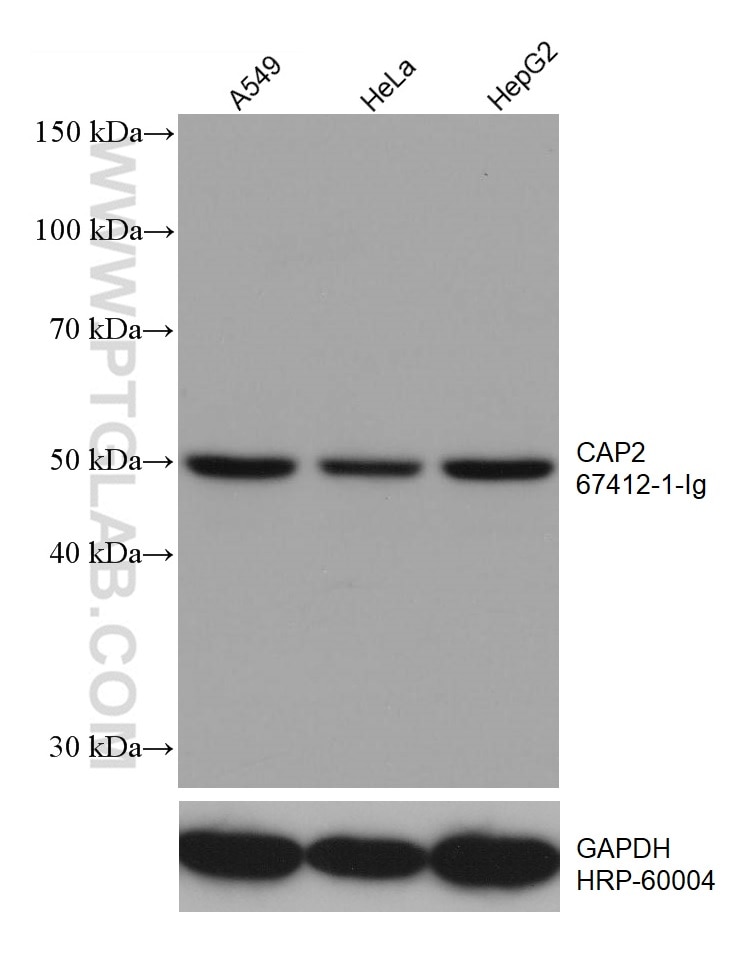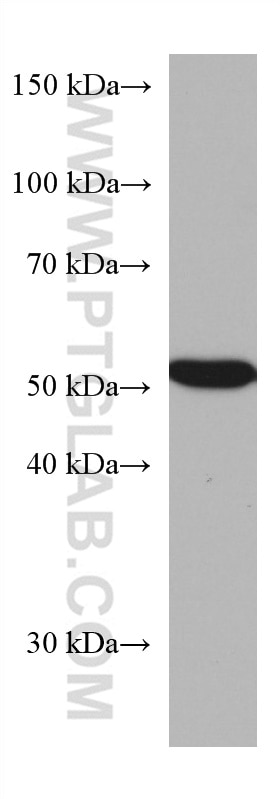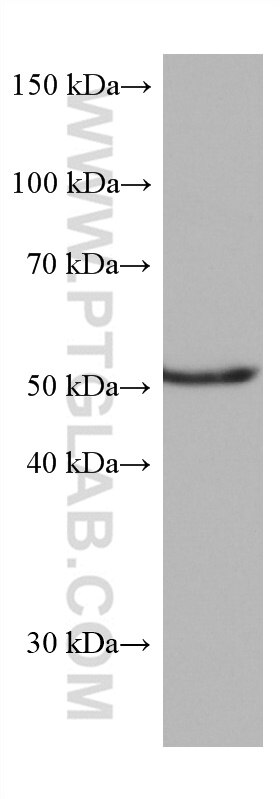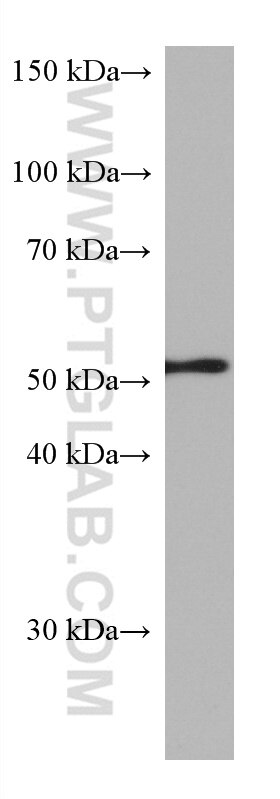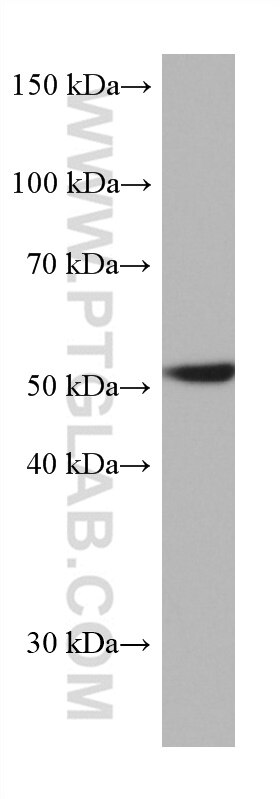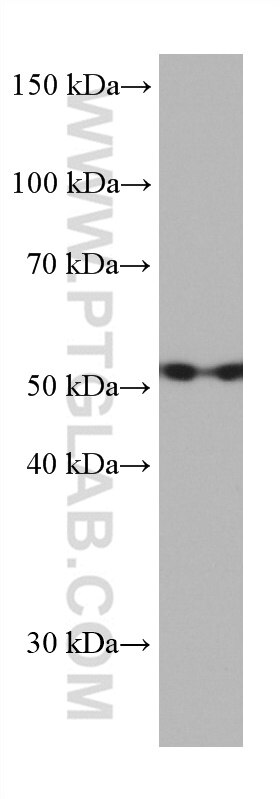Anticorps Monoclonal anti-CAP2
CAP2 Monoclonal Antibody for WB, ELISA
Hôte / Isotype
Mouse / IgG2a
Réactivité testée
Humain
Applications
WB, ELISA
Conjugaison
Non conjugué
CloneNo.
1G7D2
N° de cat : 67412-1-Ig
Synonymes
Galerie de données de validation
Applications testées
| Résultats positifs en WB | cellules A549, cellules COLO 320, cellules HeLa, cellules HepG2, cellules PC-3 |
Dilution recommandée
| Application | Dilution |
|---|---|
| Western Blot (WB) | WB : 1:2000-1:10000 |
| It is recommended that this reagent should be titrated in each testing system to obtain optimal results. | |
| Sample-dependent, check data in validation data gallery | |
Informations sur le produit
67412-1-Ig cible CAP2 dans les applications de WB, ELISA et montre une réactivité avec des échantillons Humain
| Réactivité | Humain |
| Hôte / Isotype | Mouse / IgG2a |
| Clonalité | Monoclonal |
| Type | Anticorps |
| Immunogène | CAP2 Protéine recombinante Ag8622 |
| Nom complet | CAP, adenylate cyclase-associated protein, 2 (yeast) |
| Masse moléculaire calculée | 477 aa, 53 kDa |
| Poids moléculaire observé | 51-53 kDa |
| Numéro d’acquisition GenBank | BC008481 |
| Symbole du gène | CAP2 |
| Identification du gène (NCBI) | 10486 |
| Conjugaison | Non conjugué |
| Forme | Liquide |
| Méthode de purification | Purification par protéine A |
| Tampon de stockage | PBS avec azoture de sodium à 0,02 % et glycérol à 50 % pH 7,3 |
| Conditions de stockage | Stocker à -20°C. Stable pendant un an après l'expédition. L'aliquotage n'est pas nécessaire pour le stockage à -20oC Les 20ul contiennent 0,1% de BSA. |
Informations générales
CAPs (CAP1 and CAP2) are evolutionarily conserved proteins with roles in regulating the actin cytoskeleton and in signal transduction. CAP2 is predominantly expressed in brain, heart and skeletal muscle, and skin. It is found in the nucleus in undifferentiated myoblasts and at the M-line of differentiated myotubes. Overexpression of CAP2 has been reported in many cancers, including hepatocellular carcinoma (HCC), human breast cancer, and malignant melanoma.
Protocole
| Product Specific Protocols | |
|---|---|
| WB protocol for CAP2 antibody 67412-1-Ig | Download protocol |
| Standard Protocols | |
|---|---|
| Click here to view our Standard Protocols |
